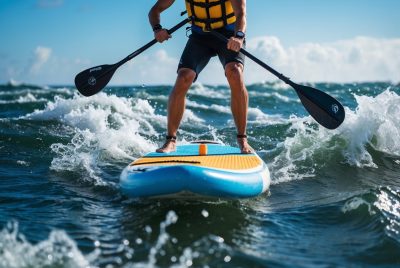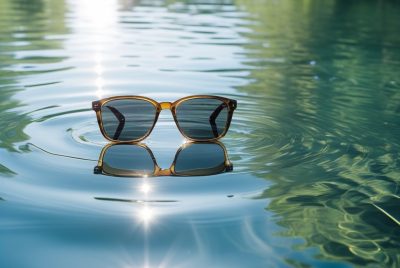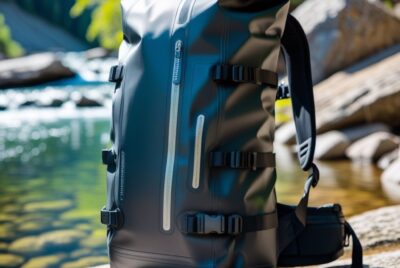Best Paddle Boards for Beginners: Your Guide to a Smooth Start
*We may earn a commission for purchases made using our links. Please see our disclosure to learn more.
Best Paddle Boards for Beginners: Your Guide to a Smooth Start
The most common question I get when people are just getting started is What are the Best paddle boards for beginners? So let’s GO! I’ve spent ample time navigating the diverse market of paddle boards and analyzing which features are most conducive to a novice’s learning curve. From my engagement with both the products and the community, I’ve found that stability and maneuverability are crucial for any beginner paddle board. What’s equally important is that the board must accommodate the user’s size, ambitions, and budget. I’ve observed that versatility in a paddle board can significantly enhance a beginner’s experience, making all-around boards a universally recommended choice.

Throughout my research, I note that beginners should prioritize paddle boards that are roughly 10 to 11 feet 6 inches in length. This size range not only aids in straightforward handling but also ensures adequate tracking for paddlers of all sizes and skill levels. It’s also essential for beginners to consider the width of the paddle board, with wider options measuring between 31 to 35 inches, offering superior stability and a more forgiving learning experience.
Moreover, for those just starting their stand-up paddleboarding journey, the construction material of the paddle board—be it solid or inflatable—impacts factors like portability and durability. Inflatable paddle boards, for example, are often celebrated for their convenience and ease of storage, an appealing attribute for beginners who might not have the space or means to transport a more cumbersome, solid board. Whether the goal is leisure, fitness, or even SUP yoga, choosing the right board is a vital step towards an enjoyable and successful foray into the world of paddleboarding.
Choosing the Right Paddle Board
When selecting a paddle board, it’s essential to consider your expertise, the board’s dimensions, and the type of board that suits your needs.
Assessing Your Skill Level
As a beginner, I look for stability, which is why a wider and thicker board is a priority. A board with a large volume and weight capacity helps me stay afloat and maintain balance, especially in calmer water conditions.
Understanding Paddle Board Dimensions
The dimensions of a paddle board—length, width, and thickness—are critical in determining how the board will perform. For beginners, I prefer:
- Length: Generally ranging between 9-11 feet, catering to different water environments.
- Width: A board around 30-34 inches wide offers improved stability.
- Thickness: A thicker board, about 5-6 inches, provides buoyancy and can support more weight.
A table summarizing beginner-friendly dimensions:
| Length (feet) | Width (inches) | Thickness (inches) |
| 9-11 | 30-34 | 5-6 |
| Length (feet) | Width (inches) | Thickness (inches) |
Comparing Board Types
I contrast two primary types of boards—inflatable paddle boards and hard boards:
- Inflatable Paddle Boards (SUPs): Ideal for beginners due to their storage convenience and overall durability. They tend to be slightly wider, enhancing stability which is key for my learning process.
- Hard Boards: These are often faster and offer better glide in the water. I would consider them as my skills progress and I start looking for improved performance.
When I think about board types, I factor in where I’ll be using the board—the ocean, lakes, or rivers—as water conditions influence my choice.
Important Features for Stability and Performance

When choosing a paddleboard for beginners, I always emphasize the significance of stability and performance. These aspects are critical in ensuring that new paddlers can learn and enjoy the sport without unnecessary difficulty. Below, I’ve detailed the key features that contribute to a board’s stable feel and efficient movement through the water.
Board Shape and Design
The shape and design of a paddleboard play a central role in its stability and performance. A wider board, typically around 32 inches, offers a stable platform for beginners. The thickness of the board also contributes to its buoyancy and stability. Boards with a planing hull are ideal for beginners because they are flat and wide, which offers a stable ride. In terms of design, the rails—the edges of the board—can affect stability too. Softer rails provide a smoother experience and are more forgiving of mistakes.
Fin Systems for Better Tracking
The fin configuration on a paddle board greatly affects its tracking, or the board’s ability to maintain a straight path in the water. Most beginner boards come with a tri-fin setup, including a larger center fin and two smaller side fins. The center fin can usually be removed or replaced, and it significantly aids in stability and straight-line tracking. A removable fin is convenient for storage and transport. Additionally, the fin box, which holds the fins, may allow for adjustments to fin position, which can alter the board’s performance. A beginner’s fin kit should be straightforward and easy to use, ensuring a hassle-free setup.
Essential Paddle Boarding Accessories

When I start out paddle boarding, I ensure that I’m equipped with the right accessories for a safe and enjoyable experience. It’s not just about the board; the right paddle and safety additions are crucial.
Selecting the Right Paddle
The right paddle is as important as the board itself. I look for a paddle that’s adjustable and matches my height for efficient paddling. An adjustable paddle should typically range between 67 to 86 inches. It’s essential to choose one that is both lightweight and durable, often made from materials like carbon fiber or fiberglass.
Safety and Convenience Add-ons
Safety gear is non-negotiable. I always wear a life jacket that fits comfortably and a coiled leash to keep my board attached to me. Here’s a list of accessories that I find essential for both safety and convenience:
- Life Jacket: Essential for safety, should meet local regulations
- Coiled Leash: Prevents the board from drifting away if I fall off
- Electric Pump: For quick and effortless inflation, I prefer an electric pump over a manual pump
- Repair Kit: Handy for any immediate fixes which might be required for inflatable boards
- Backpack: Helps in transporting the board, especially if it’s an inflatable SUP
- Deck Pad: Provides grip and comfort when standing on the board
- Kayak Conversion Kit: Converts the SUP for dual use, allowing me to enjoy kayaking as well
Each accessory plays a role in enhancing my time on the water, whether it’s through increased safety, convenience, or simply letting me have more fun out there.
Construction and Material Considerations

When I choose a beginner paddle board, I focus on the materials and construction quality because they are critical to the experience on the water. They dictate the board’s durability, weight, and stability.
Analyzing Board Materials
The most common materials you’ll find in paddle boards are PVC and fiberglass. PVC is widely used in inflatable paddle boards. Due to its properties, PVC can be combined with drop-stitch technology to create boards that are both rigid and durable when inflated. Fiberglass, on the other hand, is often used in solid paddle boards. It offers a smooth finish and can be quite lightweight.
- PVC: Inflatable, strong, and flexible.
- Fiberglass: Solid, smooth, and potentially lighter.
Balancing Durability and Weight
In my experience, a good beginner board strikes a balance between being light enough to carry easily while still being durable enough to withstand regular use. Lightweight boards are typically favored for their ease of transportation and handling, but the construction should not compromise on rigidity or durability.
- Durability is achieved through high-quality materials and construction processes. For instance, drop-stitch construction creates a more solid feel to inflatable boards.
- Weight is an important factor for usability. Boards made with a high-quality PVC can give the lightness needed without sacrificing the build quality.
Transportation and Storage Solutions

When selecting a beginner paddle board, I consider portability and storage as crucial factors. Inflatable SUP boards offer excellent convenience in both aspects. They can be deflated, rolled up, and easily transported in a backpack or carrying bag. My top pick for an affordable, portable option is the iRocker Nautical 10’6. It’s lightweight and uncomplicated to manage for transport to and from the water.
For storage, inflatable boards require minimal space. Once deflated, they fit into small storage areas, closets, or car trunks, which is not the case for hard boards. They are fortified with military-grade PVC, making them durable and resistant to damage even when stored for extended periods.
During transport, secure attachment points are essential. Many beginners’ boards come equipped with D-rings. These rings are strategically placed to fasten a cargo net, allowing for secure transportation of personal items while paddling. Additionally, the D-rings serve as extra attachment points for accessories or when you need to tether the board to a dock or boat.
Here’s a quick reference table for transportation and storage features of a well-suited beginner paddle board:
| Feature | Benefit |
| Inflatable Design | Compact and lightweight for easy transport |
| D-rings | Versatile attachment points for accessories |
| Cargo Space | Allows carrying essential gear |
| Deflated Compactness | Simplifies storage in tight spaces |
Remember, the best beginner board balances these practicalities with performance on the water.
FAQ’s For Best Paddle Boards for Beginners
In selecting the perfect paddle board, beginners often have a range of questions. I’m here to provide clear and specific answers to some of the most common queries to assist in making informed decisions.
1. How do I choose a paddle board for beginners?
When choosing a paddle board as a beginner, it’s important to consider stability and ease of use. Look for boards with a wider base around 30-34 inches, which offer better balance. A board made from durable materials like military-grade PVC can also be a good choice for longevity.
2. What is the best paddle board for a beginner woman?
For beginner women, a lighter, shorter board may be most appropriate, as it’s easier to handle and maneuver. These typically range from 9’6″ to 11′ in length. The Roc Inflatable SUP mentioned in the search results could be a good fit due to its extreme lightness and durability.
3. Is it worth buying an inflatable paddle board?
Yes, inflatable paddle boards are worth buying, especially for beginners. They are generally more affordable, easier to transport and store, and have become increasingly durable. Options like the iROCKER All Around 11′ offer a great balance between performance and convenience.
4. What style of SUP would be most suitable for a beginner?
A beginner should opt for an all-around SUP style. These boards have a rounded nose and are versatile for flatwater paddling and small waves. They strike a balance between speed, stability, and maneuverability, which is ideal for those just starting out.
5. What factors should I consider when selecting the size of a paddle board for a novice?
When selecting the size of a paddle board, a novice should consider their weight, the board’s volume, and width. A higher volume and wider board typically provide more stability, which is crucial for new paddlers. The length should correspond to the rider’s height and the type of activities they intend to engage in.




